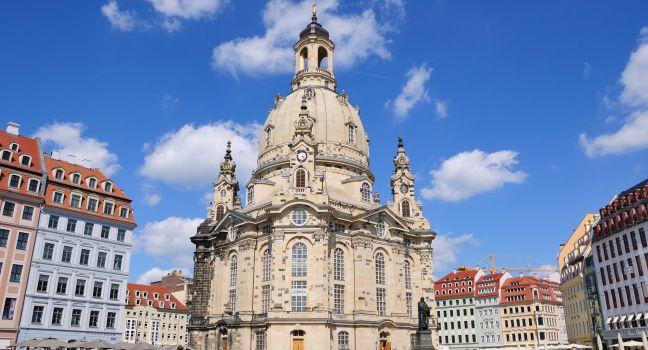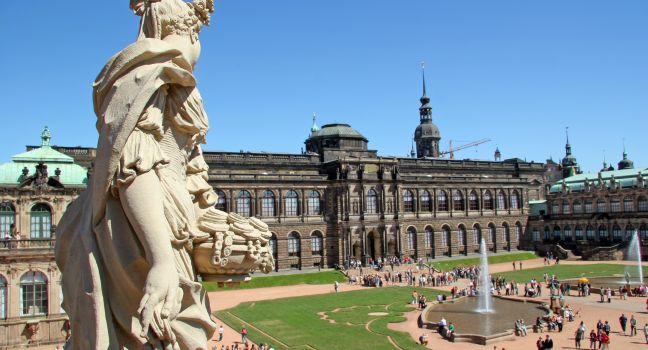Frauenkirche

This masterpiece of Baroque church architecture was completed in 1743. The huge dome set on a smaller square base, known as the Stone Bell, was the inspiration of George Bähr, who designed the church to be built "as if it was a single stone from the base to the top." On February 15, 1945, two days after the bombing of Dresden, the burned-out shell of the magnificent Stone Bell collapsed. For the following five decades, the remains of the church, a pile of rubble, remained a gripping memorial to the horrors of war. In a move shocking to the East German authorities, who organized all public demonstrations, a group of young people spontaneously met here on February 13, 1982, for a candlelight vigil for peace.
Although the will to rebuild the church was strong, the political and economic situation in the GDR prevented it. It wasn't until German unification that Dresden seriously began to consider reconstruction. In the early 1990s a citizens' initiative, joined by the Lutheran Church of Saxony and the city of Dresden, decided to rebuild the church using the original stone. The goal of completing the church by 2006, Dresden's 800th anniversary, seemed insurmountable. Money soon started pouring in from around the globe, however, and work began. The rubble was cleared away, and the size and shape of each stone were cataloged. Computer-imaging technology helped place each recovered stone in its original location.
During construction, guided tours and Frauenkirche concerts brought in donations. The biggest supporter of the project in the United Kingdom, the Dresden Trust, is centered in the city of Coventry, itself bombed mercilessly by the German Luftwaffe during the war. The Dresden Trust raised more than €600,000 and donated the gold pinnacle cross that now graces the church dome.
On Sunday, October 30, 2005 (almost a year ahead of schedule), Dresden's skyline became a little more complete with the consecration of the Frauenkirche. Leading the service was the bishop of Coventry. Although the church is usually open to all, it closes frequently for concerts and other events. There is usually a short organ service at noon every day. Check the English-language schedule next to Entrance D.




